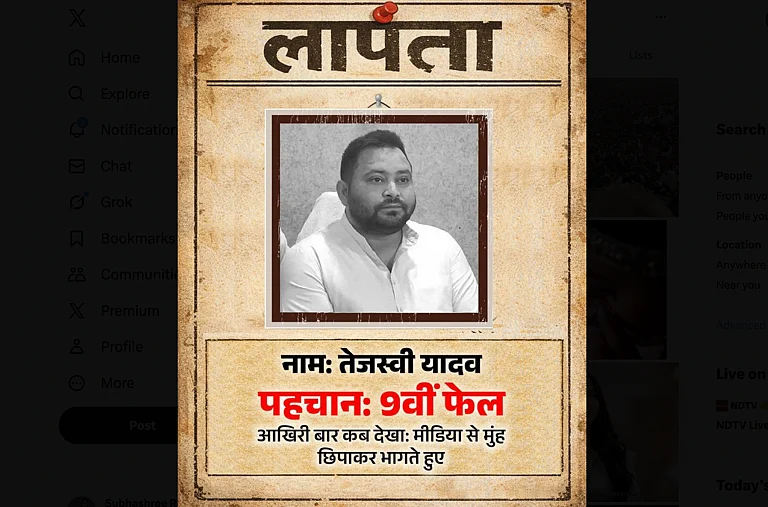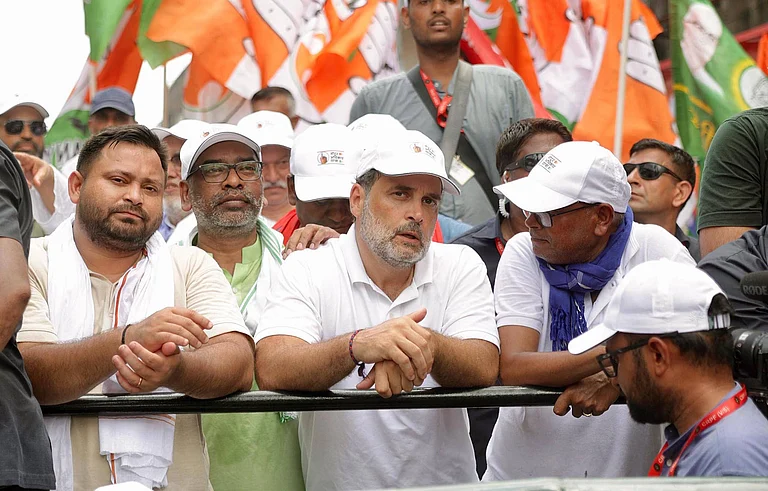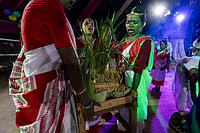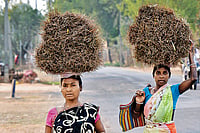I travelled across Bihar for 10 days in the weeks leading up to the election, doing ground reporting and interviewing candidates contesting the Lok Sabha election from the state. During the tour, I observed that in the 40 seats of Bihar, the fight is mostly between two main alliances: the INDIA Bloc and the NDA. These alliances encompass most of the regional parties. However, the most prominent constituencies in this election were Purnia and Siwan, where independent candidates contested.
Both seats in Bihar were in the spotlight in the days leading up to the election. Firstly, Pappu Yadav, a five-time MP contested independently this time. Secondly, Hena Shahab, the wife of the late Bahubali Shahabuddin, also ran independently. There was a lot of political drama in both of these constituencies. It was expected that Pappu Yadav would contest from Purnia on the Congress ticket. However, before the announcement, Congress's alliance RJD named its candidate from Purnia, leading to Pappu Yadav's decision to contest independently. Pappu Yadav seized the opportunity to cash on betrayal and gained sympathy.
In the same manner, Hena Shahab cut 40-year-old ties with the RJD and fought independently from the seat of Siwan with strategy. On the other hand, what played to her benefit was the dislike of the candidate contesting from the JDU. As this candidate was formerly from CPI(ML), the upper-caste community strongly disliked him, leading them to support Hena Shahab.
Of the 40 seats in Bihar, these two seats are different in the context that here it is not an INDIA bloc vs NDA fight, rather it is an Independent vs NDA contest.
From the ground view, it is clear that in Bihar overall, the NDA is comparatively stronger than the INDIA Bloc for several reasons. One reason is that despite 10 years of anti-incumbency, the Modi wave still holds significant influence. Additionally, in some Lok Sabha constituency seats in Bihar, the issue of Ram Mandir is being utilised by the NDA alliance, comprising JDU and LJP. Another contributing factor is the seat equation.
In Bihar, the candidates of INDIA Bloc are not as strong as that of NDA’s. One of the reasons could be the late announcement of candidature. Another could be improper seat sharing between Congress and RJD.
An example that can be taken is of JDU’s candidate from Munger, Lallan Singh, who has faced 10 years of anti-incumbency. However, the candidate from RJD in Munger, Anita Devi, the wife of Bahubali Ashok Mahto, is not considered a strong candidate by the public. The same is the case with the Aurangabad seat, where BJP’s candidate Sushil Singh faced 15 years of anti-incumbency. However, RJD's decision to field a candidate from this constituency without discussing it with Congress can be seen as a benefit for Sushil Singh.
Nevertheless, the only strong face from the India Bloc is Tejashwi Yadav of the RJD, a former Deputy Chief Minister, who is seen fighting strongly with the NDA. RJD's traditional vote bank, Muslims and Yadavs, happen to be with the INDIA alliance. Tejashwi Yadav is popular among youngsters. He can be seen convincing the youngsters of his work done during his 17-month tenure in the Nitish Government. His campaign focused on the issue of unemployment in the state of Bihar. He even targeted the BJP on this issue. This can be evident from the participation of youth in his rallies. Now, the question arises: how many of these participants will vote in favour of the INDIA Bloc?
Whatever I have seen and witnessed while reporting during the election tour, I can vouch that the Modi wave is still very prominent. It will be an important factor in winning seats for the NDA alliance. However, it would be difficult for the BJP to repeat its last Lok Sabha election result, which means that 39 out of 40 seats would be difficult to win. It can lose up to 8-10 seats.






























